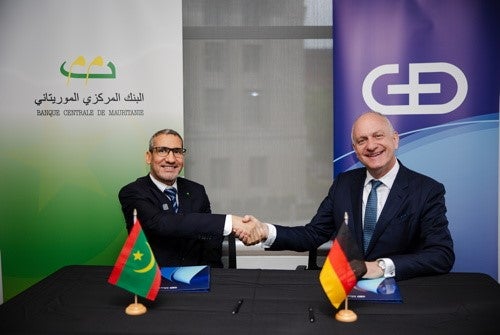High-net worth clients have evidently shown a drive to give back to the community, through social and economic need. Philanthropy is now being seen by private banks, as an integral part of their client conversations. Private Banker International’s Sruti Rao looks at the evolution of philanthropy in Asia and how HNWIs approach this unique personalised service.
In the perspective of the high net worth individual, there is an increasing desire, especially with the new generation, of involving their time and effort into projects for social good. Connecting their business to needs of the larger community and incorporating the culture of philanthropy into their business are becoming affirmed principles that such clients would like to practice. Family foundations have found different ways of giving back to the community they have developed their business in. How are philanthropy advisors in banks tailoring their advice to such a personal and emotional decision? What are the practical alternatives to pure-bred donations that may bring more sustainable development?
These are some of the issues that were raised at the Credit Suisse Philanthropists Forum 2013 held in Singapore. In its third year, the event brought together close to 150 attendees, from private banking clients to regional philanthropists and sector specialists who highlighted the various challenges the various stakeholders in the community experience.
Hans-Ulrich Meister, the co-head of private banking and wealth management for Credit Suisse Switzerland, said the current generation has become much more proactive in meeting their philanthropic goals sooner rather than later. "There is a growing desire among philanthropists globally to shift from the traditional model of leaving behind legacies, towards ‘giving while living’. This has resulted in more active and engaged philanthropy in Asia, leading to an increased demand by wealthy individuals and families for more philanthropy-related advisory services. More and more are incorporating philanthropy into their wealth management plans and want professional advice in their philanthropic commitments."
Private banks have approached this head-on, with a geared focus of servicing the philanthropy needs for their clients. Jose Isidro N. (Lito) Camacho, managing director and vice chairman Asia Pacific at Credit Suisse, explained: "We are actively doing this because our clients are demanding it. There is a want and an awareness coming out of our HNW clients around the world, to do philanthropy. It’s a service that allows our relationship to become stickier to start their journey on philanthropic needs."
The MD of the bank is also a director of Credit SuisseSymAsia foundation, which launched in 2011 as a new platform for philanthropic giving to support and encourage philanthropic projects with a particular focus on Asia.
The president of Singapore Tony Tan Keng Yam highlighted the role of financial institutions in servicing the philanthropic needs of wealthy individuals in the nation. "As a leading international financial centre, Singapore provides a full suite of wealth management services and holistic solutions for HNWIs, including philanthropists. Financial institutions can play a role in providing strategic advice to ensure effective giving and encourage sustainable philanthropy."
How well do you really know your competitors?
Access the most comprehensive Company Profiles on the market, powered by GlobalData. Save hours of research. Gain competitive edge.

Thank you!
Your download email will arrive shortly
Not ready to buy yet? Download a free sample
We are confident about the unique quality of our Company Profiles. However, we want you to make the most beneficial decision for your business, so we offer a free sample that you can download by submitting the below form
By GlobalDataA tribute to entrepreneurship
With self-made entrepreneurs constituting a major proportion of Asia’s wealthy, the concept of engaging with communities through micro-enterprise engagement is keenly considered by clients in the region.
According to research by the Credit Suisse research Asia whitepaper on ‘Strategic Philanthropy: Unlocking Entrepreneurial Potential’ micro-enterprises in developing nations have a huge impact on increasing household incomes. Small and medium enterprises here, which mainly consist of micro enterprises that employ up to five people, account for 18% of employment and 16% of GDP. Although this seems like a meagre contribution up front, the whitepaper suggests that such businesses have the growth potential to become significant SMEs that support larger companies in the supply-chain. However, legal barriers on capital accumulation, limited access to credit and lack of innovation, pose as constraints for such enterprises to grow successfully.
The forum highlighted that strategic philanthropists can get involved in such enterprises by providing access to capital and engaging with the right groups to help build their business acumen and develop entrepreneurial opportunities.
Venture philanthropy, also known as impact investing, is a means of providing capital to needy enterprises while also gaining some financial return. As Figure 1 from CSR Asia denotes, venture philanthropy is being seen as an innovative philanthropic offering that provides highest social as well as financial return, which is arguably required for sustainable reinvestment into projects.
Another way affluent investors are engaging with the business development of a community is through angel networks. ‘Angel investors’ that provide capital to help start-ups in exchange get shares in the enterprise as a means of financial return. A group of such investors form a network that contributes to a selected emerging market to propel economic growth.
Certain companies, the forum highlighted, had moved beyond the concept of investing in these communities by monetary means, incorporating these development streams into their supply-chain.
Exemplified in the forum was Credit Suisse’s existing philanthropy advisory client, Luxasia, which took a business-first approach to giving. As highlighted by the CEO of the Luxasia Group, Patrick Chong, as well as the project’s philanthropic advisor Mae Anderson, vice president of Philanthropy Advisory Asia for Credit Suisse, with the company’s core industry focus being on women, they wanted to focus their social efforts along the same vein.
Consequently, the Luxasia Foundation created a program to empower women with disadvantaged backgrounds, by associating with NGOs such as the Singapore Narcotics Association, Yellow Ribbon, and providing them free training in beauty and cosmetics roles, to help place them in jobs thereafter.
Mae Anderson:"Clients represent such a wide gamut of interest. Many of our clients are still first-generation wealth creators. They are self-made men and women who take a very entrepreneurial approach to giving. That can be risky, because the success in their business can make them ambitious in their philanthropic needs as well. So we try to disabuse them of taking on too much risk when it comes to philanthropy."
Such varying strategies for connecting business to philanthropy, is being seen as a receptive strategy for clients in Asia. However, in some of the new avenues introduced, a change in perception is needed. PBI’s conversation with Noah Beckwith, an independent development financial consultant, underlined some of the opportunities and challenges in the impact investing space.
IMPACT INVESTING: A conversation with Noah Beckwith
As a recurring theme of the philanthropy conference, the idea of impact investing is developing in the market, as a means of engaging debt and equity financing into social projects. Streamlining philanthropy to incorporate financial measurement and return into initiatives that actively engage into social good, has been a structured concept, but also faces its fair share of challenges.
The unique nature of this marriage between financial return and development endeavours also highlights the complexity in treating it as a traditional investment, said Beckwith.
To that effect, comparing impact investing vehicles against each other to measure their rate of return as you would for a conventional debt or equity instrument, may be misconstrued. Beckwith added: "I believe that just like putting two IRRs next to each other is useless, this business of comparability, I believe we are kind of boxing in shadows, because here it is about value systems. So in order to rebase for instance, an agricultural investment in Costa Rica with a health care investment in Vietnam, to the point of saying ‘this one was more impactful than the other’ you are essentially rebasing peoples’ value systems."
"It’s a deeply personal journey that an individual or a family has to take to choose the values that are important, and from an investment they can determine what aspects are important to them. For instance they can say start-ups are important because they believe in seeding new things. Measures are deeply individual."
In lieu of this perception, the rebranding of impact investment vehicles as a separate asset class in itself is an inaccurate measure, according to the development expert. "This has been done for a long time, from community developments and social projects. It is going through a rebranding, which is impact investing, and this is being systemised. But is it an asset class? I don’t think so. It’s a mixture of instruments and strategies, which are being very deliberate about what they are doing on the financial side, and on the non-financial side."
One of the prominent challenges in developing impact investing into a mainstream focus for strategic philanthropists, is a matter of perception. For a majority of the HNWIs, especially in Asia, there is a stigma on the principle behind gaining return through philanthropic work.
"The challenge is helping to define the differences between philanthropy and impact investing. They can actually be done side-by-side and deeply complementary. You can actually leverage your wealth, for redeployment and recyclability from the returns you get through impact investment. Communicating this message properly, is a challenge."
"The solution to this, especially in Asia, is adjacency. Working with individuals to identify opportunities in sectors that are adjacent to areas where they have created their wealth. In Asia that might be a better way of seducing people into this space, away from just philanthropy. Saying for instance ‘you made your money in healthcare or pharmaceuticals.’ So here’s a fund that is investing in this company or this project. So you can do good and do well at the same time. This is a way of generating return. It strikes me that this is a more effective strategy here in Asia."
A truly differentiated service proposition
In this increasingly complex arena of private banking advisory in Asia, the need to differentiate service and provide for the unique needs of customers is imperative. With the core clientele in the region consisting of entrepreneurs and business owners, there is an innate desire among high net worth individuals to give back to the community or market that brought them success. Connecting with the client in such a personal manner as managing their philanthropic initiatives is a valuable focus for private banks, to maintain and distinguish their relationship with their customers.







